Research - (2021) Volume 9, Issue 3
Patients Expectation Matching the In-Office Bleaching Results
Ragad J Al Fard1*, Ahad J Al Fard1, Ghaida A Al Aql1, Ghaidaa K Al Bakr1, Sarah F Al Harbi1 and Waseem W Radwan2
*Correspondence: Ragad J Al Fard, Dental Interns, College of Dentistry, Riyadh Elm University, Kingdom of Saudi Arabia, Email:
Abstract
Introduction: Dental bleaching or whitening has now become the most common method of treating patients with discolored teeth and have different types available. Several studies have reported that majority of their patients usually visit dental clinics seeking to improve the color of their teeth. These patients opt for teeth whitening procedures as their teeth have been discolored due to various reasons Materials and methods: All Riyadh based general public (male and female) and more than 18 years of age willing to participate in this study were requested to fill up the survey. A total of 816 residents filled the survey using social media. An online questionnaire was designed using Google Forms with questions related to expectations and satisfactions of patients towards the result of In-office bleaching treatment. Results: Age of patients showed positive correlation when inquired about daily drinking habit, increased frequency of habitual drink, finding their end result of bleaching normal, using household products to whiten their teeth and other questions. As far as gender correlation with survey questions was concerned, positive correlations were found when inquired about finding their end result normal. Rest of the questions was negatively correlated with gender. Conclusion: Majority of the participants were satisfied from their teeth whitening experience and chose bleaching as their first choice of esthetic treatment. Age and gender were positively associated with teeth whitening attitude.
Keywords
Tooth whitening, Bleaching, Dental esthetic
Introduction
In current times, general public has become more aware about having an esthetic smile. They have demonstrated high interest in receiving cosmetic dental treatments and teeth’s whitening is one of such procedures. Among the general public, young males and females have been reported to have gone for cosmetic procedures. This may be due to the societal needs as well as pressures [1,2].
Several studies have reported that majority of their patients usually visit dental clinics seeking to improve the color of their teeth. Some of these patients complain of teeth discoloration and go for esthetic treatments such as teeth whitening [3]. Apart from bleaching or teeth whitening, there are multiple methods of improving the esthetics of patient’s facial appearance, which include crowns and several types of veneers. However, teeth whitening or bleaching are considered to be the most conservative as well as cost effective esthetic options [4,5].
Dental whitening has become the most common method of treating patients with teeth discoloration and is available in various types. Major types include the in-home and in-office bleaching, with the latter one being used in dentistry for more than 125 years by utilizing various materials [4,6].
Teeth whitening system primarily consists of hydrogen peroxide and one of its precursors. Now a day, most dental bleaching products have additional ingredients serving different useful purposes. However, the principle ingredient remains hydrogen peroxide [7]. As far as the mechanism of action of hydrogen peroxide is concerned, it is based on the ability to penetrate the tooth structure and produces free radicals, which are very reactive to oxide pigments on the tooth surface [2].
Although the use of bleaching or teeth whitening is becoming common these days, it is important to know about the precautions taken for these procedures. Use of bleaching material is irritating for the soft tissues, hence it should be used carefully and manufacturer’s instructions must be followed by the consumers [8,9].
Aim
The aim of this study is to investigate by survey the patients’ expectation and knowledge towards in-office dental bleaching.
Materials and Methods
Study design: This is a cross sectional study conducted among the general public using an online survey.
Study sample: All Riyadh based general public (male and female) and more than 18 years of age willing to participate in this study were requested to fill up the survey which was completed by 816 participants using the online link through social media.
Study Instrument: An online questionnaire was designed using Google Forms with questions related to expectations and satisfactions of patients towards the result of In-office bleaching treatment starting with screening and demographic variables then depending on the responder’s answer, the questions branched out with attached photos and closed ended questionnaire.
Statistical analysis: Collected data were analyzed using SPSS version 22, where descriptive as well as inferential statistics were conducted. Comparisons between groups will be made with the value of significance kept under 0.05 using Chi-square test.
Results
The results show that the total number of study participants were N=816, which were divided into categories of age groups, gender and educational level. Table 1 describes the frequencies of the study participants according to age, with 3.1% under 18 years, 18.3% were 18-24 years, 24.8% were 25-34 years, 31.1% were 35-44 years, 17.5% were 45-54 years, 4.8% were 55-64 years and 0.5% were 60+ years. According to gender distribution, 9.3% were males and 90.7% were females.
Table 1: Demographics and their frequency distribution.
| Demographical Items | Frequencies |
|---|---|
| Age (years) | Under 18: n=25 (3.1%) |
| 18-24: n=149 (18.3%) | |
| 25-34: n=202 (24.8%) | |
| 35-44: n=254 (31.1%) | |
| 45-54: n=143 (17.5%) | |
| 55-64: n=39 (4.8%) | |
| 60+: n=4 (0.5%) | |
| Gender | Males: n=76 (9.3%) |
| Females: n=740 (90.7%) | |
| Educational Level | Intermediate: n=48 (5.9%) High school: n=170 (20.8%) University: n=523 (64.1%) |
| Postgraduate: n=56 (6.9%) | |
| Others: n=19 (2.3%) |
Table 2 reveals the frequency of all survey questions asked from the study participants. 5.3% of the participants were smokers, 67.5% had a daily habit of drinking coffee, only 12.1% had consumed more than three cups a day, 37.5% of them had the experience of bleaching, 63.7% participants were satisfied with the end result, only 0.5% of them used sodium bicarbonate as the household product for whitening purposes, 61.8% of them believed that bleaching was their first option of esthetic treatment, 49.3% revealed that they experienced the color returning back to previous one after bleaching, 29.4% informed that their dentist did not inform about any post treatment instruction, 80.2% opted for group W in shade guide when inquired about their preference, 20.4% of them reported that they had bought bleaching products from the pharmacy and 40.2% had the experience of restoring their front teeth.
Table 2: Demographics and their frequency distribution.
| Survey Question | Frequency |
|---|---|
| Smoker | Yes: n=43 (5.3%) |
| No: n=773 (94.7%) | |
| Daily drinking habit: | Soft drinks: n=34 (4.2%) Coffee: n=541 (67.5%) |
| Tea: n=141 (17.6%) | |
| Juices: n=85 (10.6%) | |
| Frequency of habitual drink (daily): | One cup a day: n=343 (44.5%) Two cups a day: n=207 (26.8%) Three cups a day: n=128 (16.6%) |
| More than three cups: n=93 (12.1%) | |
| Have you bleached before? | Yes: n=306 (37.5%) |
| No: n=510 (62.5%) | |
| Satisfied with bleaching results? | Yes: n=195 (63.7%) |
| No: n=111 (36.3%) | |
| Satisfaction level (scale): | 0: n=9 (2.9%) |
| 1: n=7 (2.3%) | |
| 2: n=18 (5.9%) | |
| 3: n=25 (8.2%) | |
| 4: n=22 (7.2%) | |
| 5: n=48 (15.7%) | |
| 6: n=30 (9.8%) | |
| 7: n=33 (10.8%) | |
| 8: n=39 (12.7%) | |
| 9: n=18 (5.9%) | |
| 10: n=57 (18.6%) | |
| Which smile do you prefer? | 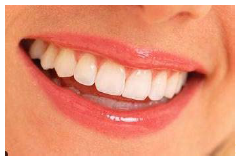 : n=165 (53.9%) : n=165 (53.9%) |
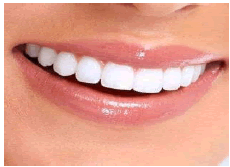 : n=141 (46.1%) : n=141 (46.1%) |
|
| Is the end result normal? | Yes: n=230 (75.2%) |
| No: n=76 (24.8%) | |
| Use of household products to whiten teeth | Sodium bicarbonate: n=1 (0.5%) Coal: n=3 (1.6%) |
| Other: n=185 (97.9%) | |
| Bleaching is first treatment option? | Yes: n=189 (61.8%) |
| No: n=117 (38.2%) | |
| Experienced any problem after bleaching? | Return color: n=151 (49.3%) Sensitivity: n=83 (27.1%) |
| Gingivitis: n=24 (7.8%) | |
| No result: n=48 (15.7%) | |
| Dentist informed about post treatment instructions? | Yes: n=216 (70.6%) |
| No: n=90 (29.4%) | |
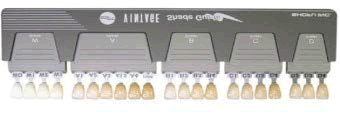 Which of the above shades you prefer? |
Group W: n=409 (80.2%) Group A: n=55 (10.8%) Group B: n=37 (7.3%) Group C: n=2 (0.4%) Group D: n=7 (1.4%) |
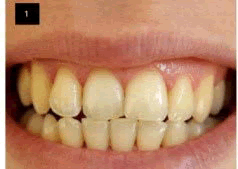 |
Group W: n=308 (60.4%) Group A: n=115 (22.5%) Group B: n=69 (13.5%) Group C: n=10 (2%) Group D: n=8 (1.6%) |
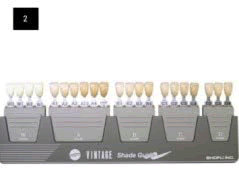 If ‘1’ is your teeth color, which shade is expected after bleaching? |
|
| Bought any bleaching products from | Yes: n=103 (20.4%) |
| pharmacy or through social media? | No: n=403 (79.6%) |
| Family member had bleaching? Was it satisfactory? | Yes, and quite satisfied: n=170 (27.8%) Yes, but not satisfied: n=339 (55.5%) No: n=102 (16.7%) |
| Have you ever restored frontal teeth? | Yes: n=205 (40.2%) |
| No: n=305 (59.8%) |
Tables 3 and 4 show the correlation of age and gender with the questions asked in the survey. As far as age is concerned, positive correlation was found when inquired about daily drinking habit, increased frequency of habitual drink, finding their end result of bleaching normal, using household products to whiten their teeth, bleaching being their first option for esthetic treatment, experiencing problem after bleaching, dentist informing about post treatment instructions, preference of shades and family member having bleaching before. Rest of the questions showed negative correlation with age. As far as gender correlation with survey questions was concerned, positive correlations were found when inquired about finding their end result normal, dentist informing about post treatment instructions and shade expected after bleaching. Rest of the questions was negatively correlated with gender.
Table 3: Correlation and Chi-square between Age and survey questions.
| Age and Survey Questions | Pearson’s Correlation Chi Square |
|---|---|
| Daily drinking habit: | r= -0.029 P=0.000 |
| Frequency of habitual drink (daily): | r=0.048 P=0.606 |
| Have you bleached before? | r= -0.011 P=0.000 |
| Satisfied with bleaching results? | r= -0.048 P=0.866 |
| Satisfaction level (scale): | r= -0.015 P=0.398 |
| Which smile do you prefer? | r= -0.120 P=0.002 |
| Is the end result normal? | r= .069 P=0.243 |
| Use of household products to whiten teeth | r=0.152 P= .591 |
| Bleaching is first treatment option? | r=0.045 P=0.664 |
| Experienced any problem after bleaching? | r=0.076, P=0.161 |
| Dentist informed about post treatment instructions | r=0.042, P=0.077 |
 Which of the above shades you prefer? |
r=0.105, P=0.188 |
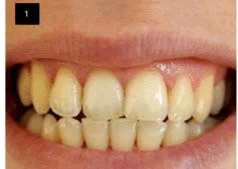 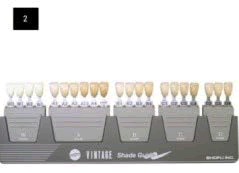 If ‘1’ is your teeth color, which shade is expected after bleaching? |
r=0.036, P=0.609 |
| Bought any bleaching products from pharmacy or through social media? | r=-0.079, P=0.232 |
| Family memberhad bleaching? Was it satisfactory? | r=0.043, P=0.033 |
| Have you ever restored frontal teeth? | r=-0.073, P=0.004 |
Table 4: Correlation and chi-square between gender and survey questions.
| Gender and Survey Questions | Pearson’s Correlation | Chi Square |
|---|---|---|
| Daily drinking habit: | r= -.064 | P= .001 |
| Frequency of habitual drink (daily): | r= -.042 | P= .161 |
| Have you bleached before? | r= -.022 | P= .307 |
| Satisfied with bleaching results? | r= -.017 | P= .454 |
| Satisfaction level (scale): | r= -.129 | P= .424 |
| Which smile do you prefer? | r= -.059 | P= .200 |
| Is the end result normal? | r= .018 | P= .477 |
| Use of household products to whiten teeth | r= -.054 | P= .753 |
| Bleaching is first treatment option? | r=-0.07 | P= .151 |
| Experienced any problem after bleaching? | r=-0.081 | P= .433 |
| Dentist informed about post treatment instructions? | r=0.05 | P= .255 |
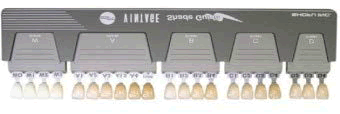 Which of the above shades you prefer? |
r=-0.062 | P= .419 |
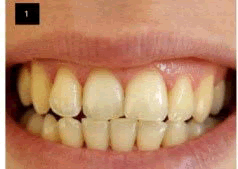 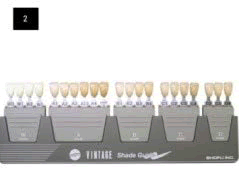 If ‘1’ is your teeth color, which shade is expected after bleaching? |
r=0.006 | P= .398 |
| Bought any bleaching products from pharmacy or through social media? | r=-0.156 | P= .004 |
| Family member had bleaching? Was it satisfactory | r=-0.008 | P= .754 |
| Have you ever restored frontal teeth? | r=-0.073 | P= .004 |
Discussion
This study was conducted to assess the patients’ choice and experience when it comes to having esthetic dental treatment such as teeth whitening. There are several causes of teeth discoloration, which include extrinsic as well as intrinsic. Either of these causes result in unfavorable teeth shade and leads to seeking of esthetic treatment. Our results suggest that prevalence and frequency of drinking tea and coffee were high, which play an important role in causing teeth discoloration [10].
In the survey used, there were preference related questions in order to determine what patients is expecting or anticipating at the end of esthetic dental treatment such as teeth whitening. It was noted from table 4 that the gender comparison showed no statistically significant relation with esthetic preferences, which was not the case in the study conducted by Rosenstiel et al. [11]. They found gender to be statistically significant when related with esthetic preferences with females being highly critical and choosy about their esthetics, which was not the case with our study.
We inquired our study participants about their experience of undergoing teeth whitening procedure and 63.7% of them were satisfied by the results. A similarly designed study conducted by Nomay et al. [12] in King Saud University, Riyadh suggested that merely 32.6% of the participants were satisfied with the teeth whitening results. Moreover, they also reported that the female participants were keener to receive esthetic dental treatment as compared to males and this difference was statistically significant unlike our findings.
Another investigation in India focused on the perception of female patients towards teeth whitening procedures and the findings revealed that only 7% of them had the experience of bleaching. This was different to our study findings where the study sample revealed that 37.5% had the experience of undergoing teeth whitening procedures.
20.4% of the study participants reported that they had the experience of buying teeth whitening kits and related products from the pharmacy, which was also reported by another investigation conducted by Alshamrani et al. [13].
Conclusion
â?? Majority of the participants were satisfied from their teeth whitening experience and chose bleaching as their first choice of esthetic treatment.
â?? It can also be concluded that variables such as daily drinking routine, having undergone teeth whitening previously, preference of teeth color, family members having teeth whitening and restoration of frontal teeth were significantly associated with age of participants.
â?? Finally, variables such as daily drinking routine, buying whitening products from pharmacy and restoration of frontal teeth were significantly associated with the gender of participants.
References
- Albanai SR, Gillam DG, Taylor PD. An overview on the Effects of 10% and 15% carbamide peroxide and its relationship to dentine sensitivity. Eur J Prosthodont Restorative Dent 2015; 23:50-55.
- Demarco FF, Conde M.M, Ely C, et al. Preferences on vital and nonvital tooth bleaching: a survey among dentists from a city of Southern Brazil. Br Dent J 2013; 24:527-531.
- Halabi S, Matsui N, Nikaido T, et al. Effect of office bleaching on enamel bonding performance. J Adhesive Dent 2019; 21.
- Al-Harbi A, Ardu S, Bortolotto T, et al. Effect of extended application time on the efficacy of an in-office hydrogen peroxide bleaching agent: an in vitro study. Eur J Esthet Dent 2013; 8:226-236.
- de Paula EA, Nava JA, Rosso C, et al. In-office bleaching with a two-and seven-day intervals between clinical sessions: A randomized clinical trial on tooth sensitivity. J Dent 2015; 43:424-429.
- Haywood VB. Number of in-office light-activated bleaching treatments needed to achieve patient satisfaction. Quintessence Int 2006; 37:115-120.
- Ribeiro Batista G, Tamião Arantes P, Attin T, et al. Effect of chemical activation of 10% carbamide peroxide gel in tooth bleaching. Eur J Esthetic Dent 2013; 8.
- Matis BA, Cochran MA, Wang, G, et al. A clinical evaluation of two in-office bleaching regimens with and without tray bleaching. Operative Dent 2009; 34:142-149.
- Nie J, Tian FC, Wang ZH, et al. Comparison of efficacy and outcome satisfaction between in-office and home teeth bleaching in Chinese patients. J Oral Sci 2017; 59:527-532.
- Sulieman M. An overview of tooth discoloration: Extrinsic, intrinsic and internalized stains. Dent Update 2005; 32:463-471.
- Rosenstiel SF, Rashid RG. Public preferences for anterior tooth variations: a web-based study. J Esthetic Restorative Dent 2002; 14:97-106.
- Nomay N. Public attitude and awareness towards their teeth color and dental bleaching in Saudi Arabia: A cross-sectional survey. Journal of Public Health and Epidemiology, 2016; 8:45-52.
- Alshamrani AMT, Wahid AQA. General public perceptions and knowledge on tooth bleaching in Riyadh, KSA. Egyptian J Hospital Med 2018; 71:2727-2737.
Author Info
Ragad J Al Fard1*, Ahad J Al Fard1, Ghaida A Al Aql1, Ghaidaa K Al Bakr1, Sarah F Al Harbi1 and Waseem W Radwan2
1Dental Interns, College of Dentistry, Riyadh Elm University, Kingdom of Saudi Arabia2Department of Restorative Department, Riyadh Elm University, Riyadh, Kingdom of Saudi Arabia
Citation: Ragad J Al Fard, Ahad J Al Fard, Ghaida A Al Aql, Ghaidaa K Al Bakr, Sarah F Al Harbi, Waseem W Radwan, Patients Expectation Matching the In-Office Bleaching Results, J Res Med Dent Sci, 2021, 9 (3):165-170.
Received: 27-Feb-2021 Accepted: 19-Mar-2021 Published: 26-Mar-2021
